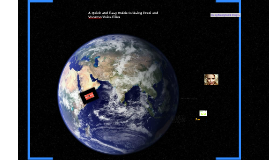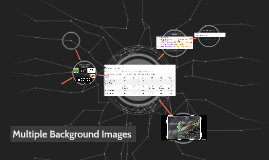Waves Presentation
Transcript: DVDs & Waves CONCLUSION A sonogram is a noninvasive medical procedure that helps diagnose and treat health conditions. The method uses high frequency sound waves to produce a specific image of the patient's body. They don't use radiation, so it's much safer than an x-ray since patients don't have to worry about the possible side effects of radiation exposure. (Two Views LLC) General Info! Compact Disk The CD was invented by James Russel in 1965 An audio CD or a CD-ROM has information coded in tiny pits on its surface. A laser light is focused to get information on the sequence of those pits. The Blue Ray disc was invented by the Blu-Ray disc association Its name was derived from the underlying technology, which uses a blue-violet laser to read and write data. Its correct abbreviation is BD, not BR or BRD! The spelling is NOT a mistake! In "Blu-ray" the letter 'e' was purposefully dropped so that the term could be registered as a trademark. There isn't any possible way to actually prevent a tsunami from happening. However, there are many ways to prepare for one in areas where tsunamis are active. With an effective warning system, people can be evacuated, and damage can also be prevented. Tsunami walls, flood gates, & channels are three common ways that tsunamis are potentially prevented. CD, DVD, & Blu-Ray Technology Credit Cards Driver's Licenses Used on some barcodes to prevent things from getting stolen the medical field (X-ray holography, Endoscopic holography, Etc.) Waves How to Prevent Tsunamis Caused when the ocean is suddenly displaced on a large scale by an underwater disturbance (earthquakes); the ocean floor is raised or dropped & large tsunami waves can be formed Holograms Sonograms Seismic Waves & Tsunamis Where is holography used? General Info! General Info! Digital Versatile Disc Invented in 1995 by Phillips, Sony, Toshiba & Time Warner. Storage Capacity from 4.7 GB to 17 GB Access rates differs from 600 KB/s to 1.3 MB/s Kenzie Peacock, Cheyenne Kovacsy, & Amy Figurski - 3rd period (CD) As the disc spins, the ray of radiation passes over tiny differences in elevation, which alters the the wavelengths of the reflected waves. These waves pass back through the system of lenses, which are refracted in a different direction and in turn alter an electrical current that is "read" to produce sound. Additionally, CD players use infrared light, which means the spaces on the CD must be far apart enough to allow for infrared's relatively large wavelength. DVD players go more in-depth on this concept by relying on visible red light, which has a shorter wavelength than infrared. Blu-Ray Discs use blue visible light, which have an even shorter wavelength. Principles of holograms: interference & diffraction of light waves Described as a "window with memory" Waves are used in many different ways, and are often a big part of our daily lives. Most of the time, we don't even realize they're being used! CD's, DVD's, Blu-Ray disks, holograms, seismic waves, tsunamis, and sonograms are just a few examples out of the abundance that exist! How do DVDs, Blu-Ray disks & CDs use waves?? Sonography can be used to examine the: uterus, ovaries, liver, kidneys, spleen, thyroid, pancreas, gallbladder and bladder. It is useful for seeing the inside of the heart to determine any blockages or abnormal structures, measuring blood flow, detecting kidney stones and identifying cancers early. It can also be used to guide other slightly invasive procedures with limited visibility like a needle biopsy or needle aspirations. (Sanford-Brown)

















